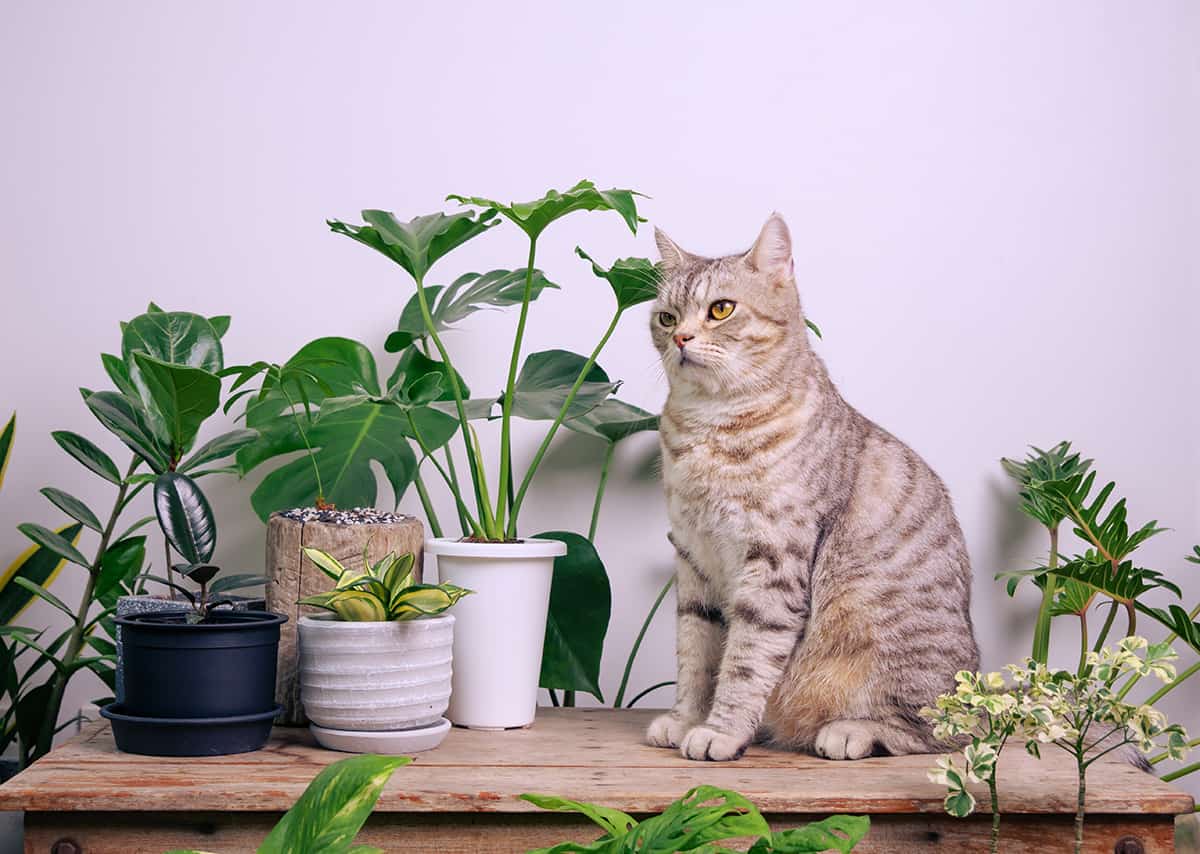Ever caught your cat nibbling on the leaves of a houseplant, sparking a mini heart attack as you rush to Google whether it’s safe? You’re not alone. Many pet parents face this challenge, seeking to beautify their homes with greenery while ensuring their furry friends stay safe.
Fortunately, there’s a variety of houseplants that can coexist with cats, adding vibrancy to your space without worry. From the air-purifying Spider Plant to the striking yet safe Boston Fern, these cat-friendly options offer peace of mind and a touch of nature indoors.
Let’s explore some top picks that keep both your green thumb and your cat happy.
Table of Contents
Spider Plant
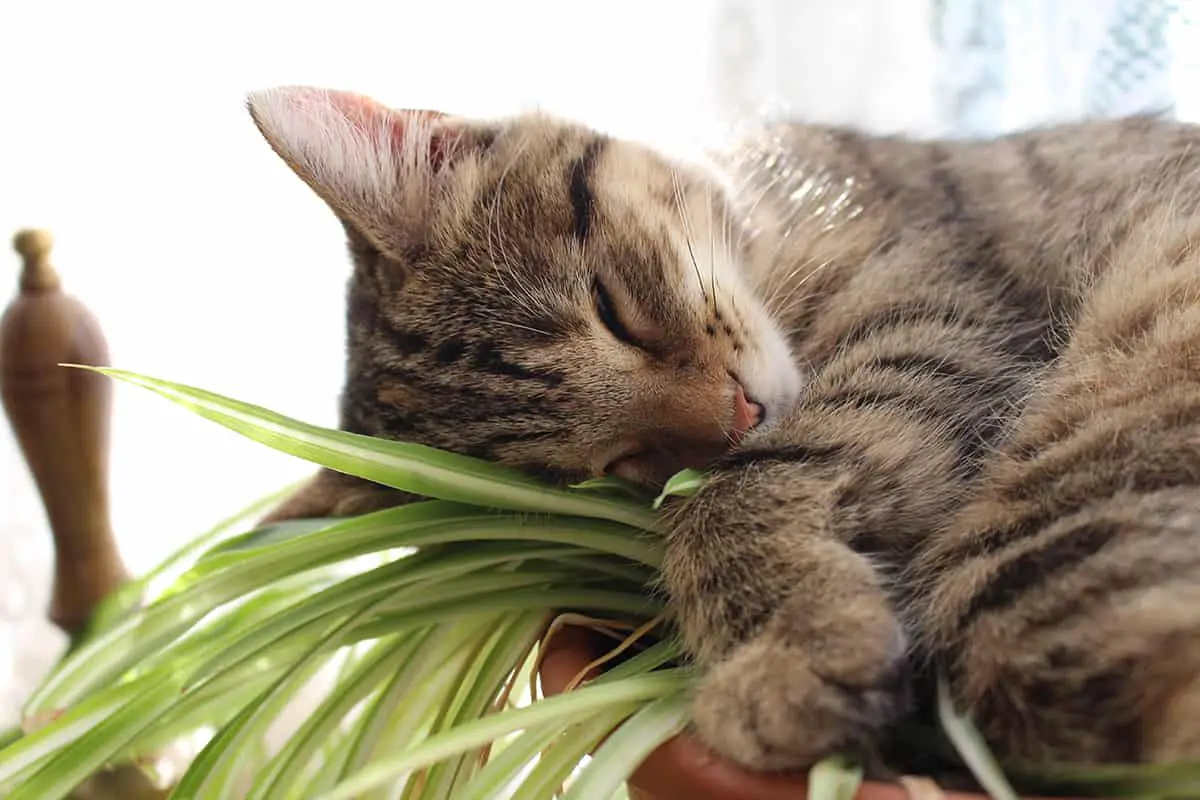
Chlorophytum comosum, commonly known as the spider plant, is a resilient and adaptable houseplant. It thrives in a range of lighting conditions, from low to bright indirect light. This plant is a great choice if you have cats. The ASPCA confirms spider plants are non-toxic to felines.
Your spider plant might attract your cat due to its dangling leaves. Cats sometimes nibble on the leaves. This usually causes no harm. However, it can sometimes lead to mild digestive upset.
For the Spider Plant, maintaining lightly moist soil is crucial for its care. It thrives in a range of light conditions, from low to bright indirect light, making it versatile for different indoor environments. The plant prefers average room temperatures, fitting well into most homes without the need for special adjustments.
Additionally, it benefits from average to high humidity levels, which can be achieved in a typical indoor setting or by using a humidifier to increase moisture in the air.
With consistent care, spider plants produce small white flowers. They also grow ‘pups’ or baby plants. You can pot these to create new spider plants.
Keep the plant in a place where your cat can’t pull it down. Hanging baskets are a good choice. They keep the long fronds out of reach. This also prevents potential mess from fallen leaves.
African Violet
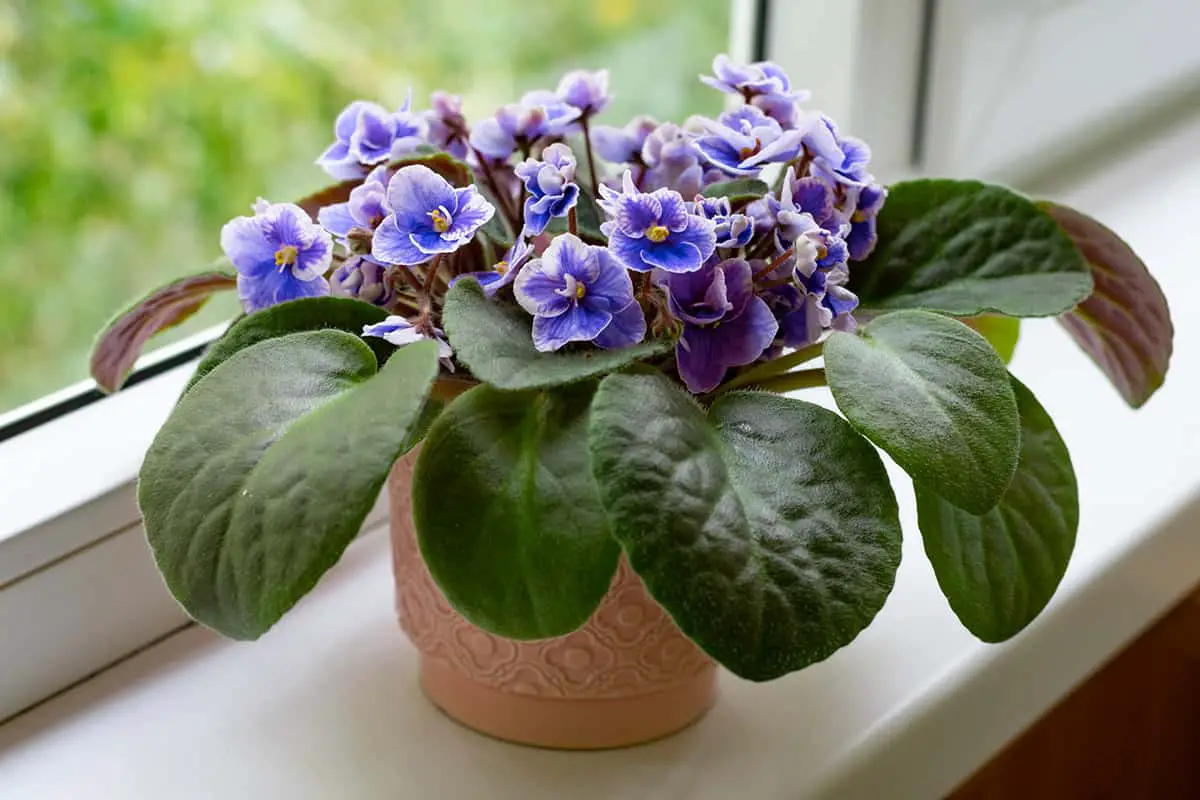
These popular houseplants are safe for cats, which is a relief if your furry friend likes to nibble on greens. However, it’s worth noting that if a cat consumes too many leaves, it might experience mild stomach upset, so it’s still wise to monitor your pet’s interaction with the plant.
These plants thrive in moderate temperatures and average humidity. For optimal growth, position your African Violet in an area that receives bright, indirect light, as too much direct sunlight can damage the leaves.
Regarding its watering schedule, it’s important to maintain lightly moist soil, and you should ideally water the plant from the bottom to prevent the leaves from getting wet, which can lead to issues such as leaf spots.
African Violets are cherished for their flower varieties, which include small blooms in purple or pink, and they can also showcase white flowers.
Paddy’s Wig
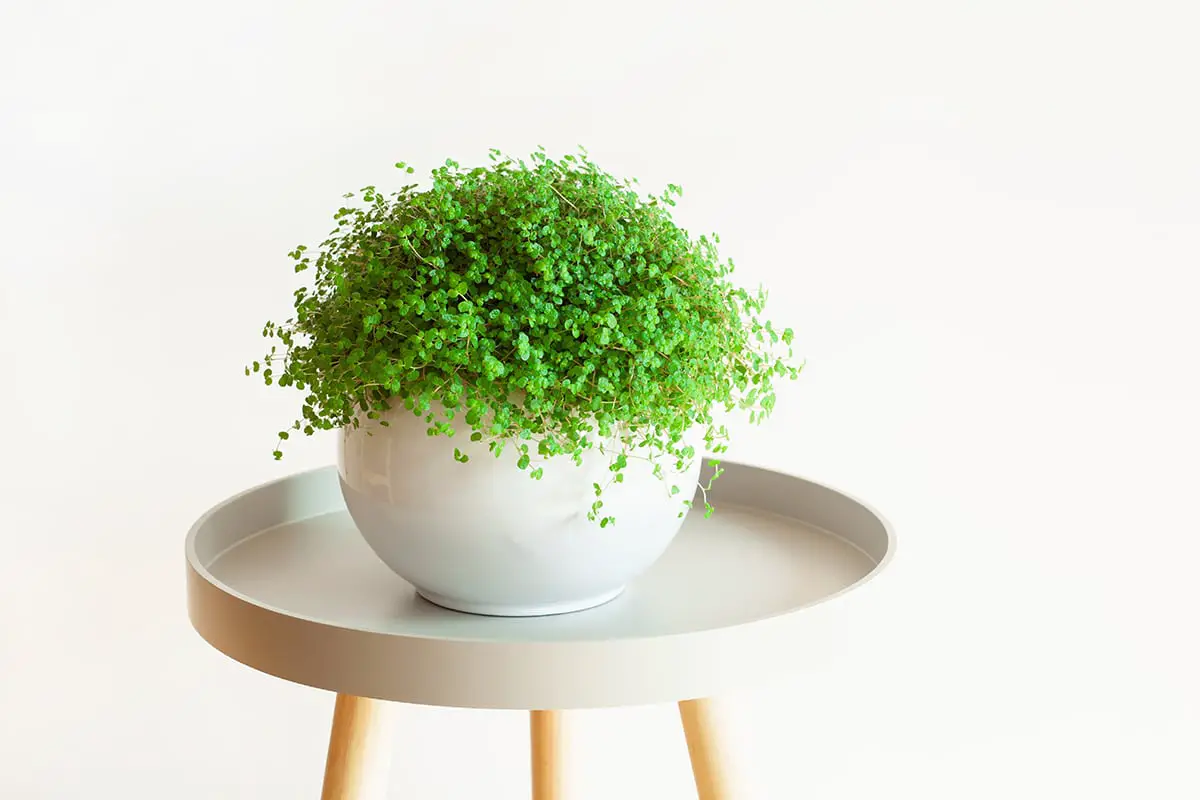
Known scientifically as Soleirolia soleirolii, Paddy’s Wig is commonly referred to as Angel’s Tears or Baby’s Tears. Your cats can explore this plant without risk, as it is non-toxic to cats.
Paddy’s Wig can thrive in buckets or terrariums, adding a touch of greenery to your space. This plant demands minimal care, making it suitable for busy plant owners.
While non-toxic, it’s wise to monitor your cats. If they nibble on Paddy’s Wig, they might experience stomach upset. In some cases, it could lead to vomiting or diarrhea. Even so, these symptoms are usually mild. To be safe, keep an eye on your pets and consult a vet if you notice adverse effects.
This plant’s soft, lush foliage invites curiosity and can complement any room. It’s easy to grow and maintain. Regular watering and moderate light will keep Paddy’s Wig flourishing. It allows you to create a pet-friendly indoor garden with minimal worry.
Haworthia
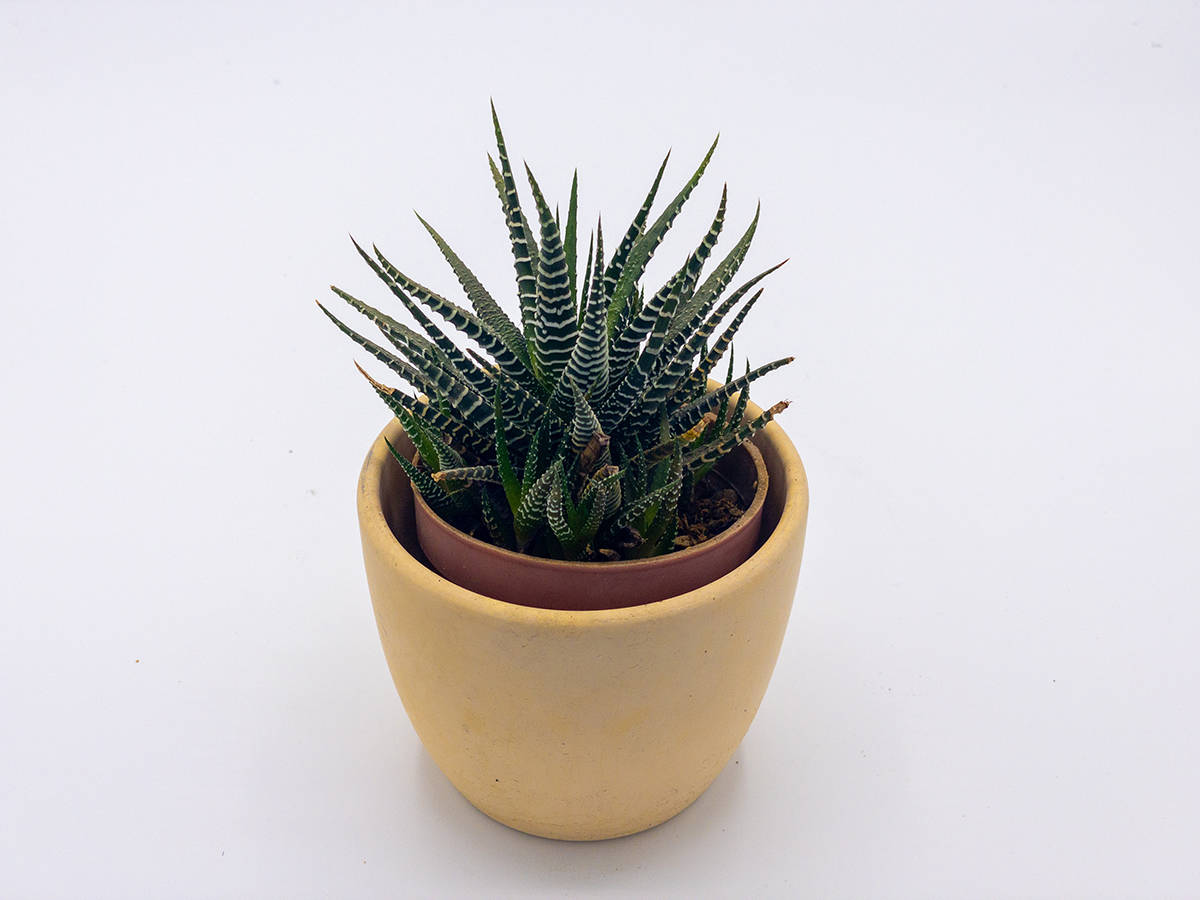
These small, low-growing plants have fleshy leaves. They fit well in tight spaces and thrive with minimal care. Your Haworthia won’t cause harm if your cat nibbles on it.
Keep your plant in bright, indirect light. Direct sunlight can scorch the leaves. Water your Haworthia sparingly. The soil should dry out between waterings.
Haworthias come in various species, each with unique leaf textures and shapes. They are hardy and can last for many years with proper care.
Calathea
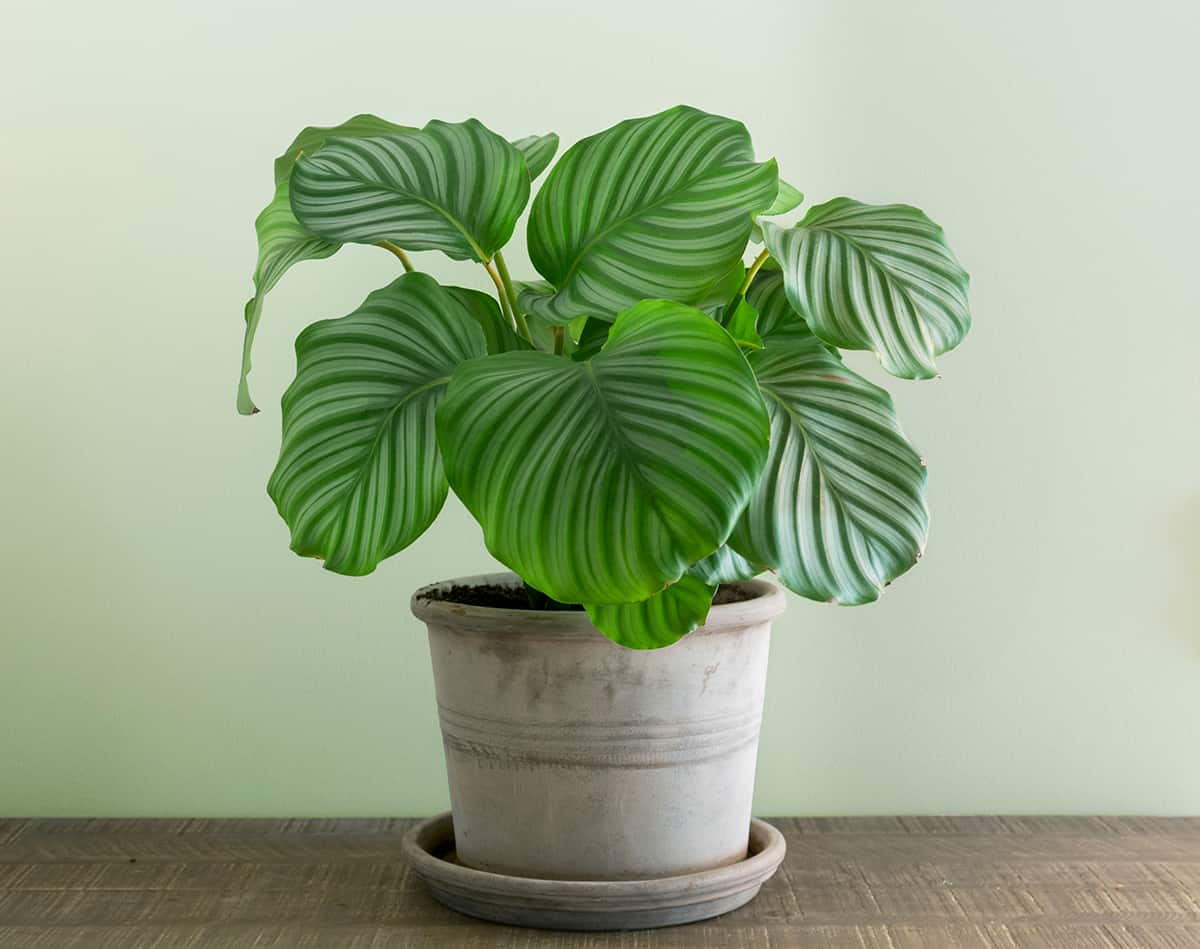
With their safe nature and lush foliage, Calatheas make a worry-free addition to any cat-inclusive household. Calathea plants are non-toxic and safe, ensuring peace of mind for pet owners. These plants feature large, attractive leaves with unique patterns and color contrasts.
The plant prefers indirect light, as too much sunlight can cause its vibrant leaves to fade. It thrives when the soil is consistently moist, but care should be taken to avoid waterlogging. High humidity is crucial for preventing Calathea’s leaves from drying out, so it’s important to create a humid environment that mimics their native tropical forests.
In terms of growth and flowering, these plants are celebrated for their large leaves, which can grow up to 30 inches tall. With proper care, they might even surprise you with delicate flowers, though it’s the foliage that usually steals the show.
When selecting a Calathea, consider its many varieties such as the Rattlesnake Calathea or the Calathea Triostar. Each offers distinct leaf patterns and colors.
Venus Fly Trap
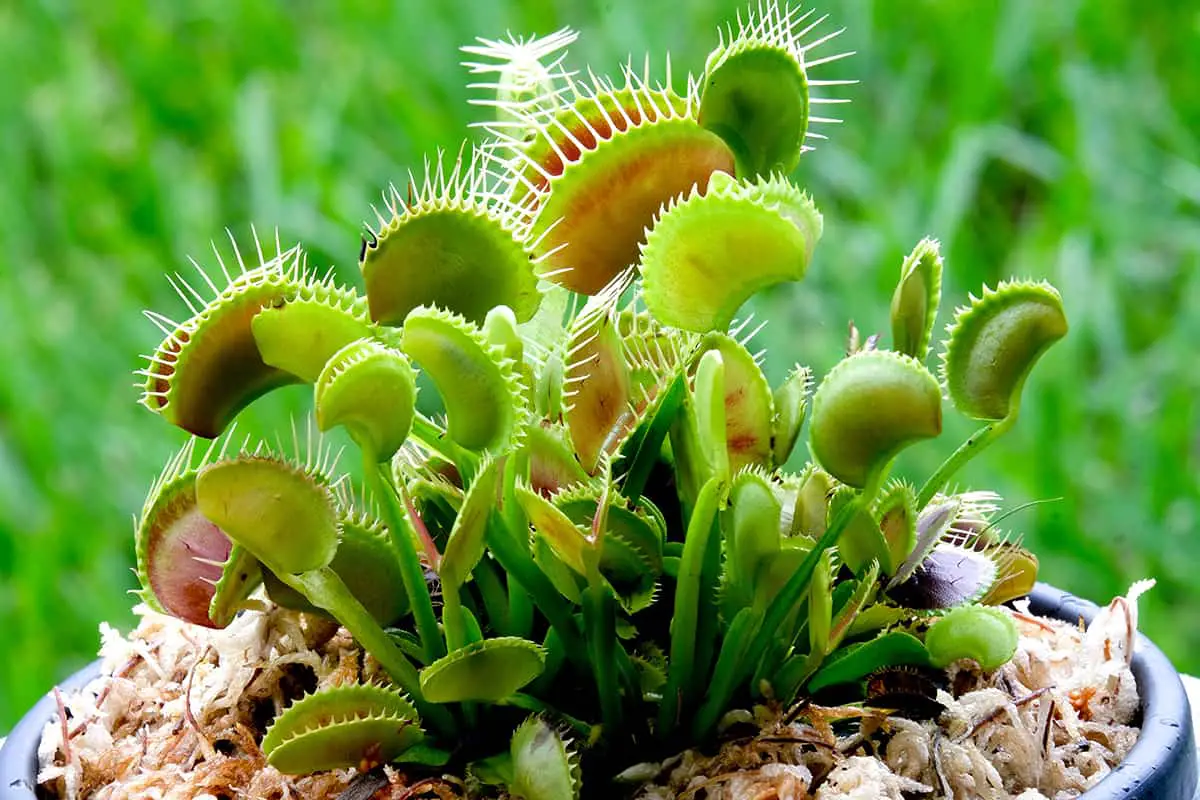
If you’re a cat owner looking for pet-safe houseplants, consider the Venus fly trap. Venus fly traps are non-toxic and pose no threat to cats if touched or ingested. Your main concern won’t be your cat’s health but rather the well-being of the plant itself. Cats are often curious and may disturb the delicate traps.
Venus fly traps require plenty of sunlight, ideally around 12 hours daily, to thrive. When watering these carnivorous plants, it’s best to use distilled water or rainwater, as tap water can be harmful due to its mineral content. For soil, a mix of peat moss and perlite is recommended to provide the appropriate nutrients and drainage.
As for protecting the plant, Venus fly traps are quite fragile and can be damaged by rough handling or play. To prevent any accidents, it’s advisable to place the plant in a high location or somewhere out of your cat’s reach, safeguarding it from potential harm.
You should supervise your cat if they show interest in the plant. It’s best to avoid issues with both the plant and your pet. If you want to learn more about these unique plants, here’s a helpful guide on Venus fly traps and cats.
Gloxinia
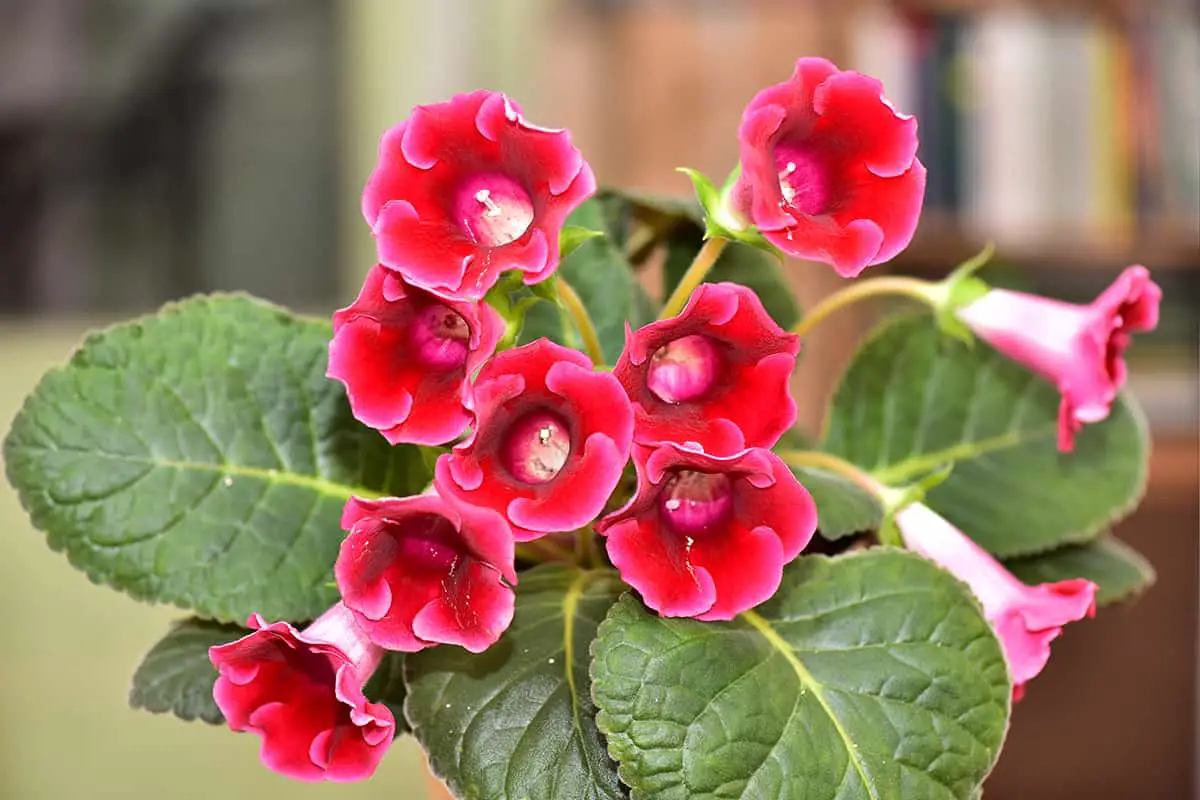
Gloxinia, with its velvety foliage and bell-shaped flowers, is a beautiful choice for cat owners. Its blooms come in an assortment of colors. You should keep the plant in a well-lit area without direct sunlight.
Water gloxinia regularly to maintain moist soil. Ensure good drainage to prevent root rot. Overwatering can harm the plant.
Feed your gloxinia with a balanced fertilizer every few weeks. This will support flower production. Remember to follow the product’s instructions to avoid over-fertilization.
Keep gloxinia away from drafts and cold temperatures, as this plant thrives in warmth.
Ponytail Palm
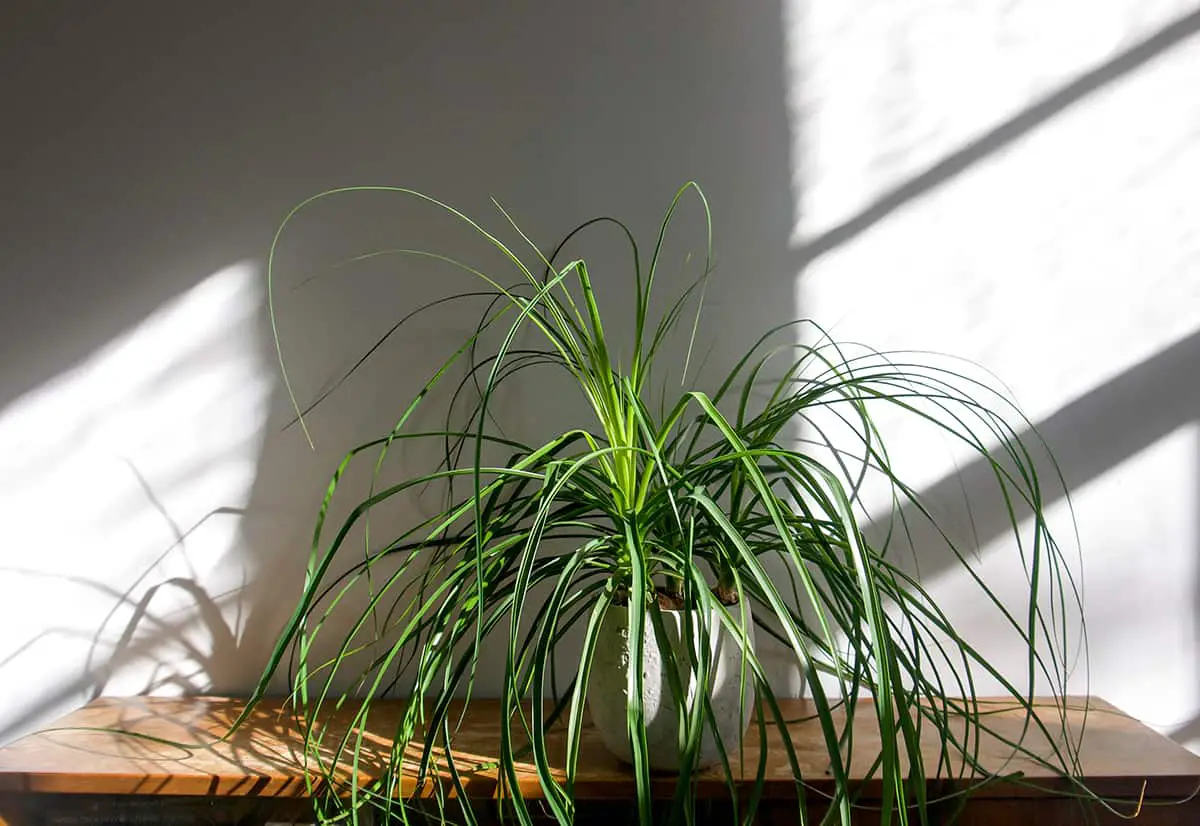
The Ponytail Palm, Beaucarnea recurvata, got its name from its robust trunk and long, curly leaves that resemble a ponytail. You may admire this plant for its striking appearance without worrying about your feline friends’ health. Your cat can brush against it or take a nibble without harm.
The plant thrives in bright, indirect light. When it comes to watering, it should be done sparingly, as its trunk is capable of storing water, making it drought-resistant. For soil, the plant prefers a well-draining mix to prevent waterlogging and promote healthy root development.
Your Ponytail Palm can grow up to 3 feet indoors. It adapts well to indoor environments. Remember, it’s a slow grower, so don’t expect rapid changes in size. This plant’s low maintenance needs make it ideal for busy individuals. It’s resilient and can withstand occasional neglect. Moreover, the Ponytail has an air-purifying ability, which contributes to cleaner indoor air.
Brazilian Orchid
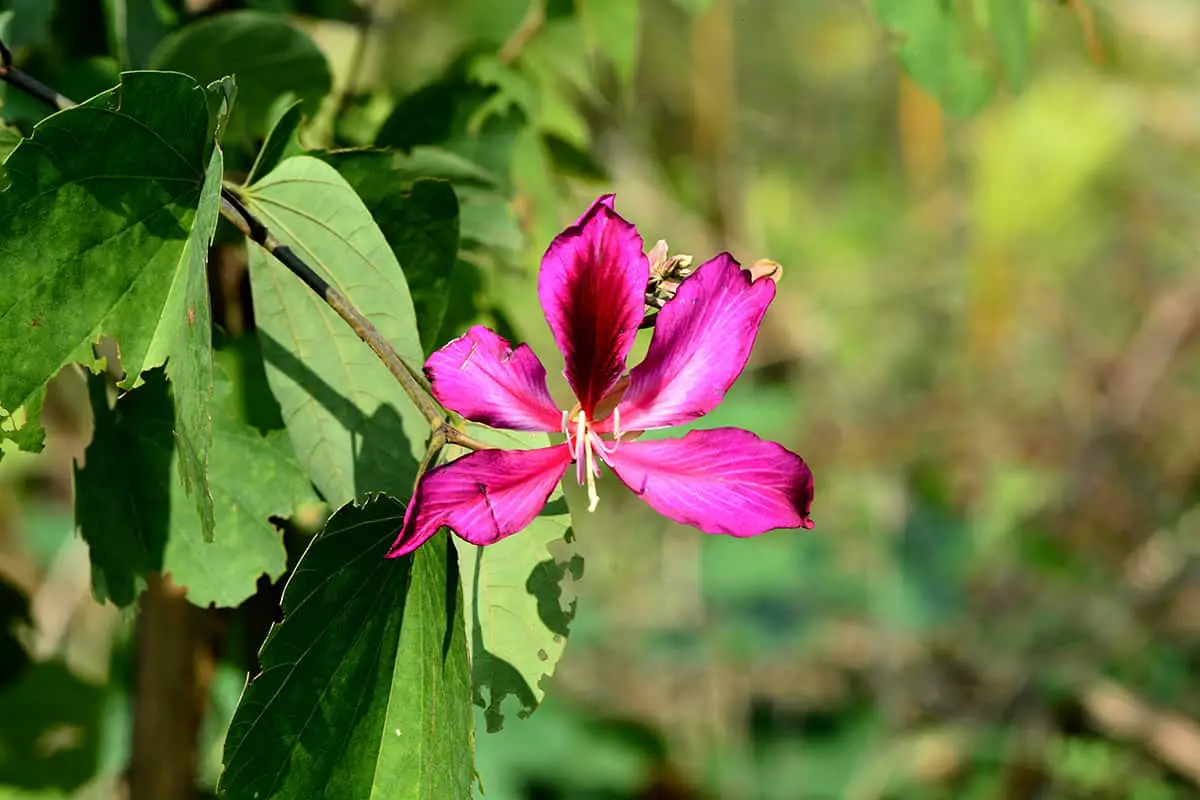
Your cat can safely enjoy the company of a Brazilian Orchid. These vibrant plants add a touch of the tropics to your home. You’ll appreciate their diverse color palette and intricate blooms. Their care is straightforward, requiring moderate light and humidity.
When watering your Brazilian Orchid, consistency is key. Provide just enough to keep the soil moist but not soggy. Mist the leaves to mimic their native humid environment. You’ll find this supports their overall health and flowering success.
Keep them away from direct sunlight to prevent leaf burn. A bright bathroom or kitchen often provides the ideal setting. Here, they can enjoy scattered light and the added moisture from daily activities.
Place your orchid out of your cat’s reach. Although they’re non-toxic, it’s best to prevent any nibbling. Elevated shelves or hanging planters are great options.
Canary Date Palm
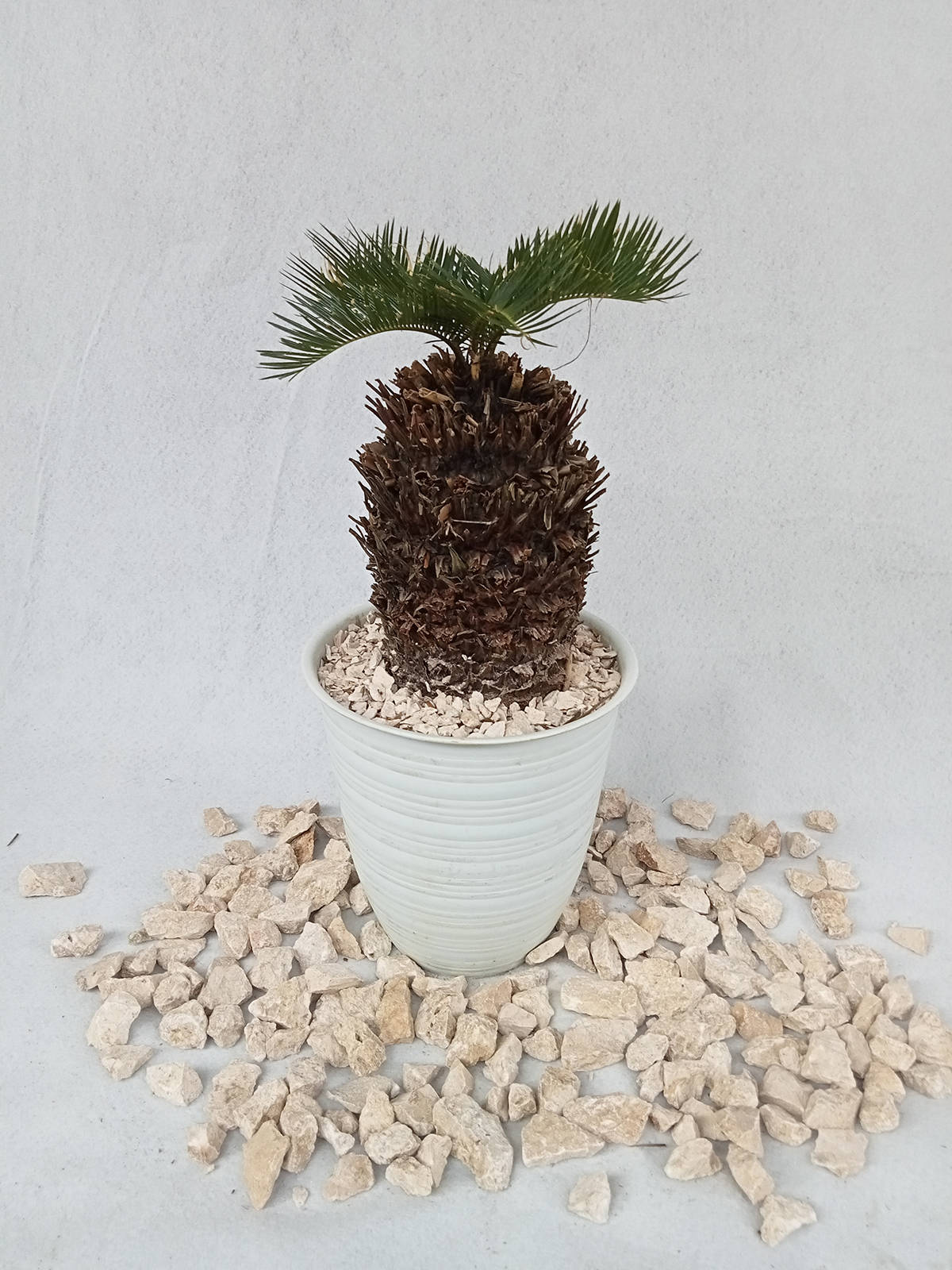
Your feline friends will enjoy the Canary Date Palm because it’s both pet-friendly and visually appealing. Classified as non-toxic to cats by the ASPCA, this plant presents no risk to your pet if they nibble on it. However, it’s still wise to prevent pets from chewing on plants as a general precaution.
The plant prefers bright, indirect sunlight but can also tolerate lower light levels, making it versatile for various indoor settings. Regarding its watering schedule, it is important to allow the soil to dry out completely between waterings. Additionally, it requires less frequent watering during the winter months, adapting to the plant’s reduced growth rate in cooler conditions.
For optimal growth, the Canary Date Palm should be in well-draining soil and situated in a pot with adequate drainage. Overwatering can lead to root rot, so be careful not to let the plant stand in water.
Banana Plant
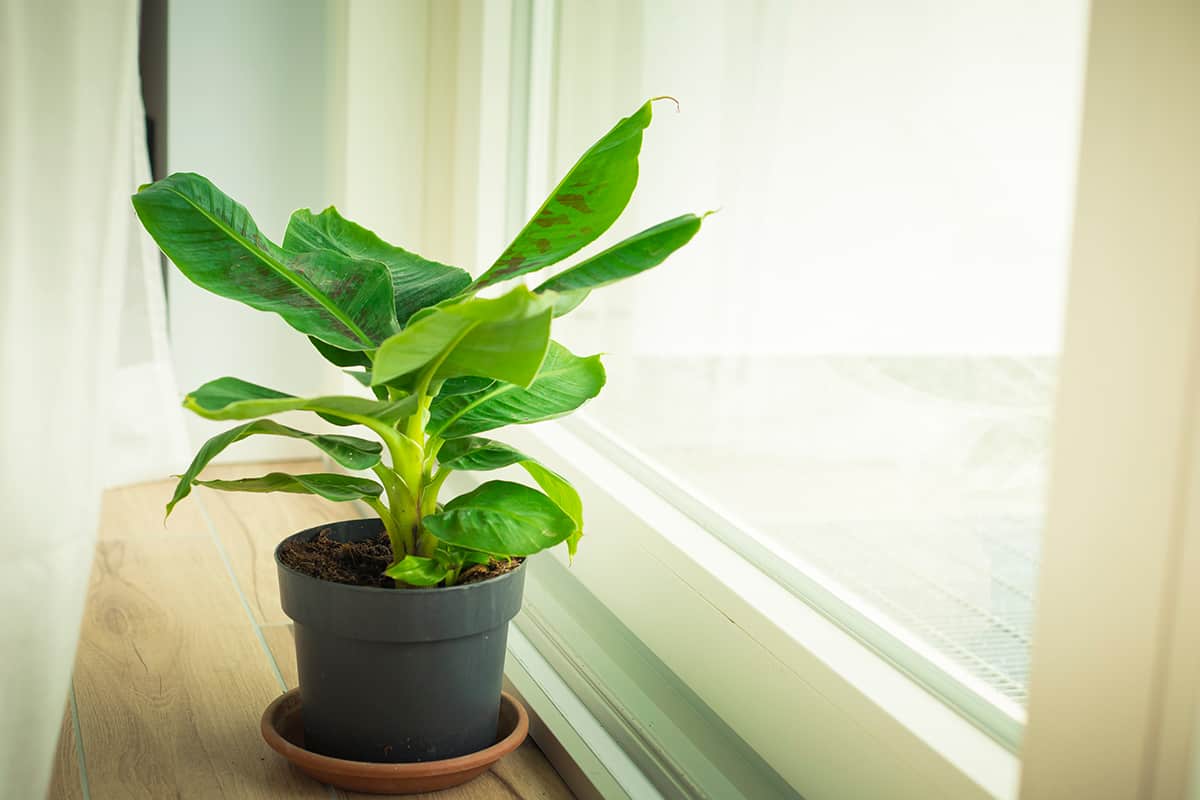
Banana plants, or Musa, are a tropical choice for your home that you can keep around cats. They do well in bright, indirect sunlight and add a lush, vibrant touch to your decor. Your banana plant requires regular watering, but make sure to avoid waterlogging.
The leaves of the banana plant are broad and can grow quite large. This makes them a striking feature in any room. They need space to flourish, so you should place them where they won’t be cramped.
Maintenance for these plants involves removing dead or damaged leaves. Feeding them with a balanced fertilizer will support their growth. Keep an eye out for pests and deal with them promptly to keep your plant healthy.
Mexican Snowball
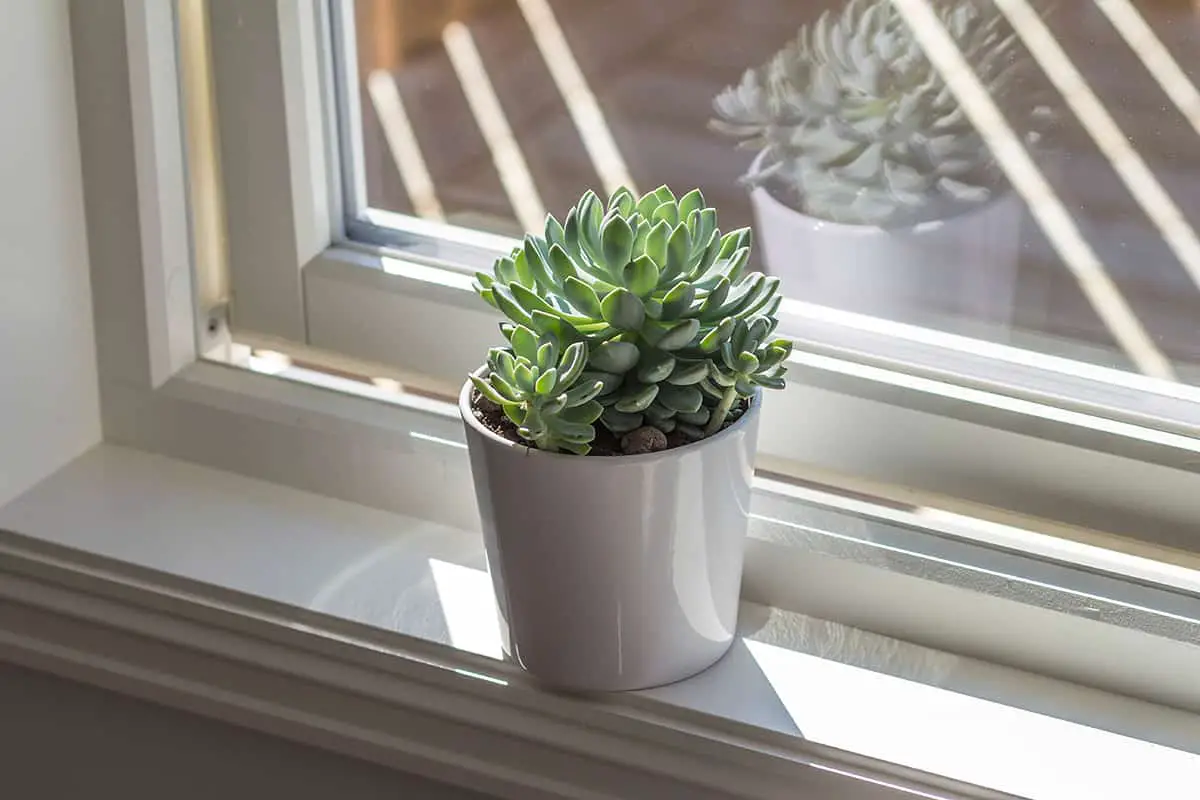
The Mexican Snowball, or Echeveria elegans, is a pet-friendly choice for your home. Your cats won’t be harmed if they get close to the plant.
It thrives in sunny conditions and handles drought well. This succulent grows up to 8 inches tall and 12 inches wide.
You should place them in a warm spot with plenty of light. But ensure they aren’t exposed to too much direct sunlight. Water them sparingly, only when the soil is dry to the touch.
The rosettes of the Mexican Snowball are eye-catching. Their leaves sport a powdery coating of farina, which acts as a sunscreen.
Marigold
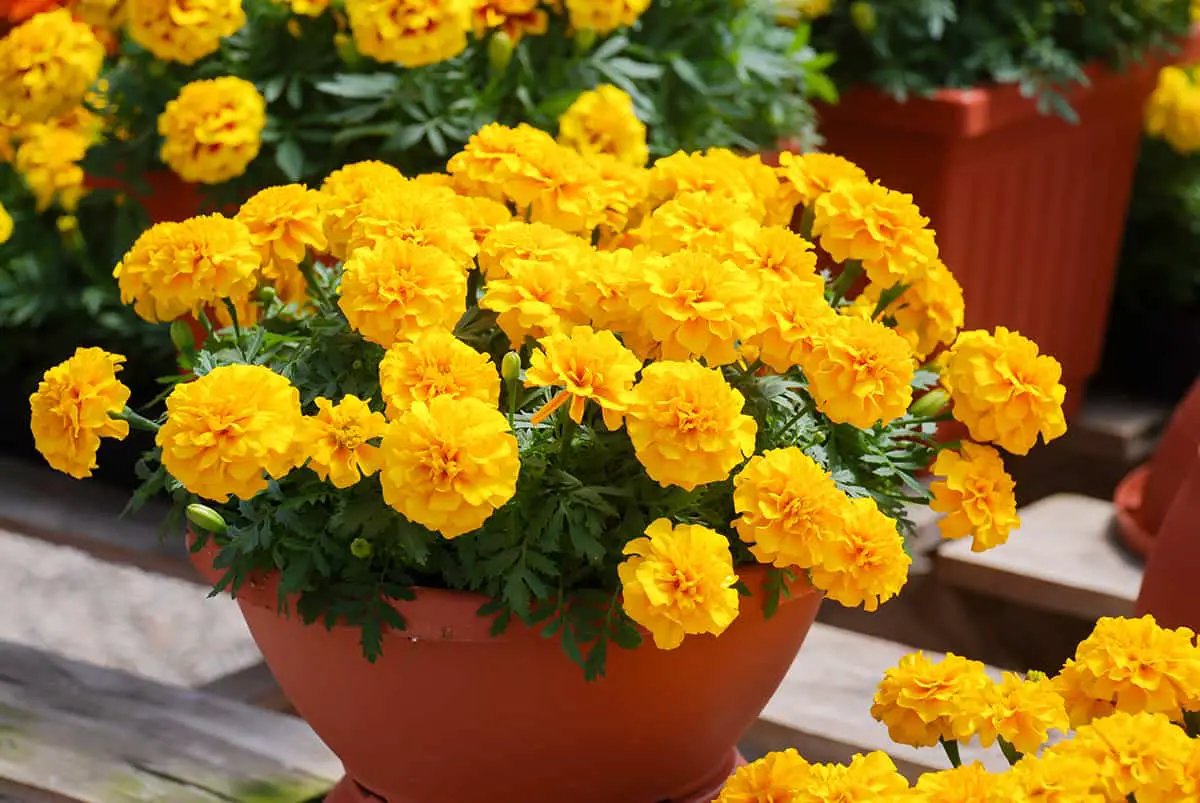
Marigolds come in two main types: Calendula officinalis and Tagetes patula. Your cats can safely be around both types.
On the other hand, caution is advised with French marigolds or Tagetes patula, as they can cause mild irritation if ingested in large amounts. However, they are not lethal.
Marigolds offer several benefits, including a distinctive smell that repels certain pests, making them beneficial for garden health. Their bright colors are effective in attracting pollinators, contributing to a healthier environment for all your plants.
In terms of care, marigolds are low-maintenance flowers that thrive in sunny spots with well-drained soil. It’s important to ensure they receive enough water, especially during dry periods, to maintain their health and vitality.
As for their appearance, marigolds bloom in vibrant shades of yellow, orange, and red, adding a splash of color to both indoor and outdoor spaces. Their bold hues can significantly brighten up your home, creating a lively and inviting atmosphere.
Friendship Plant
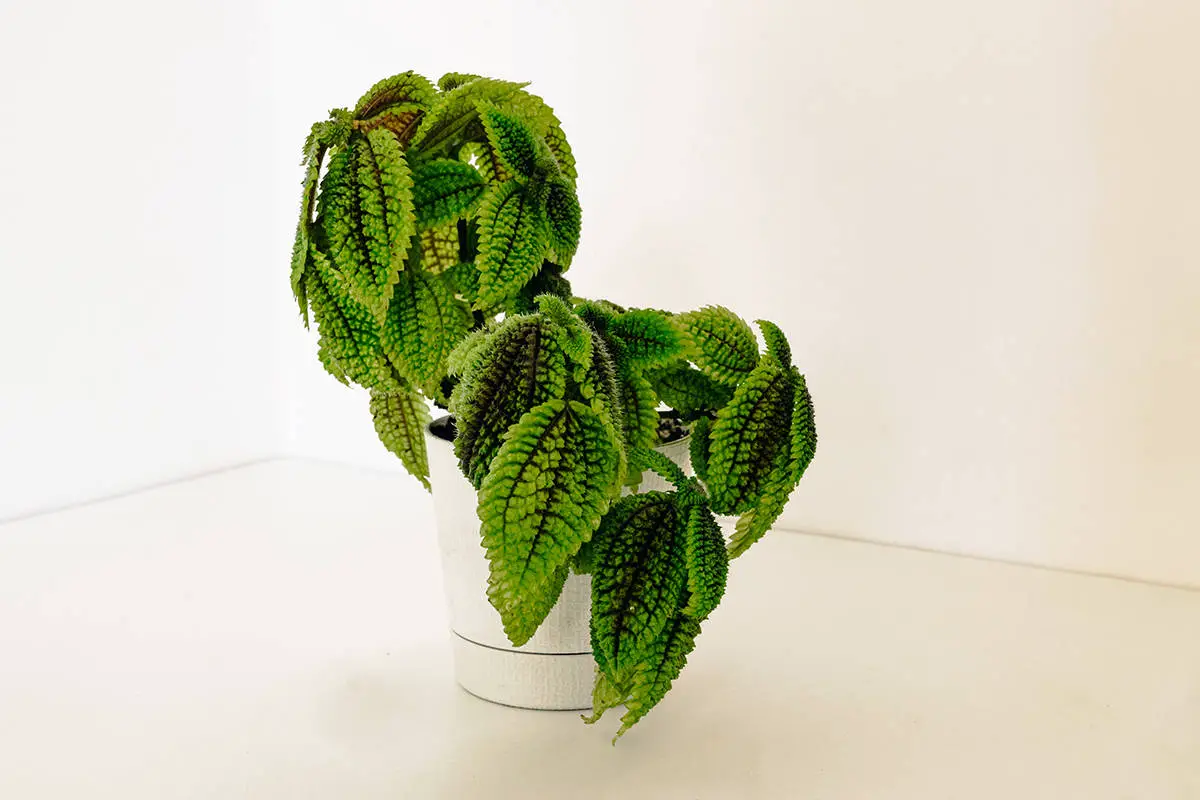
The Friendship Plant, or Pilea involucrata has soft, deep green leaves with silver patterns. You will find it easy to care for as it thrives in moist soil and indirect light.
This plant is non-toxic to cats. It means your pets can brush against it without risk. It grows well in terrariums or as a potted plant. Keeping the soil damp is essential for its health.
You can propagate the Friendship Plant easily through cuttings. Share it with friends who also own pets. This feature gives the plant its friendly name.
Remember to provide humidity for this tropical houseplant. Misting the leaves can achieve this effect. A regular watering schedule prevents the soil from drying out.
Green Ripple Peperomia
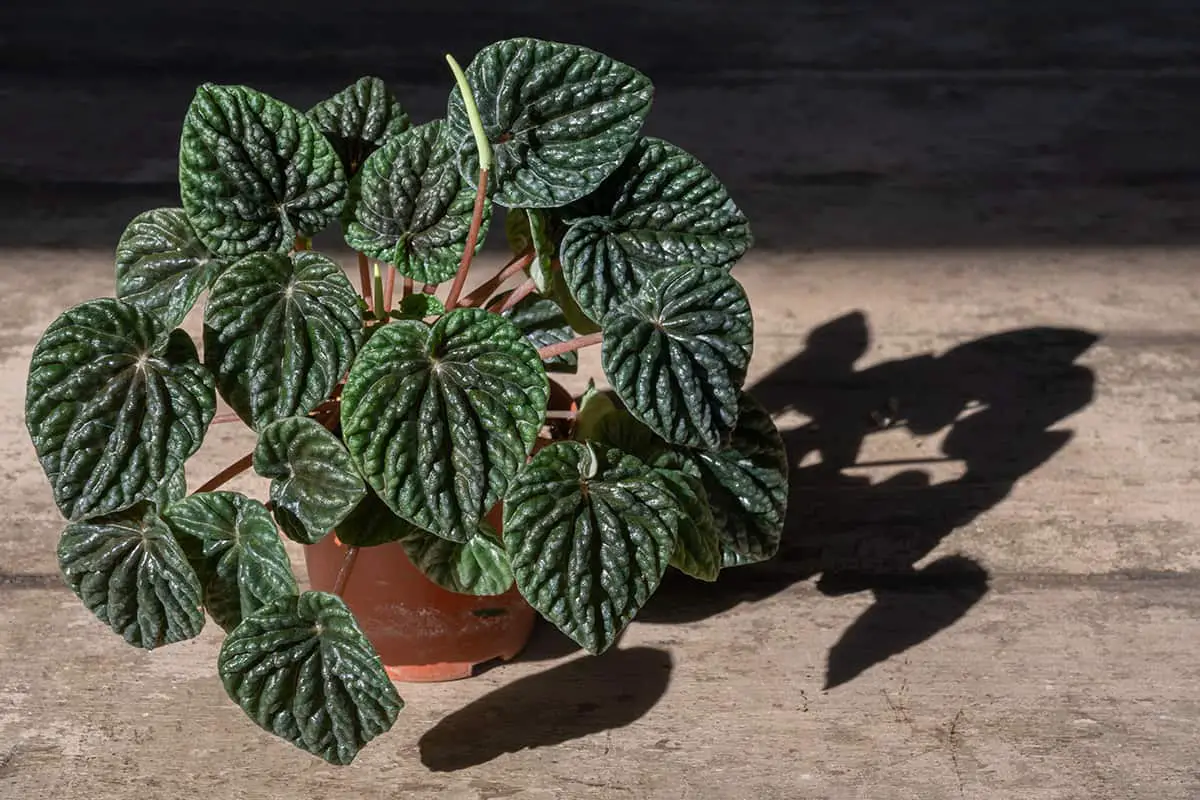
Suitable for homes with cats, the Green Ripple Peperomia or Peperomia caperata, stands out as a non-toxic choice. You can ensure your pet’s safety while appreciating this plant’s beauty.
The Green Ripple Peperomia boasts richly textured leaves. The foliage presents a heart-shaped appearance and a deep green hue. It’s a compact houseplant, fitting well in small spaces.
For care, you must keep the soil consistently moist but not soggy. Ensure proper drainage to prevent root rot. This plant can survive in a range of indoor conditions. It may need less water in the winter months. Do not expose it to direct sunlight.
Caeroba
Caeroba adds beauty to your home without harming your cats.
The leaves of the Caeroba plant are lush and green. These plants thrive in indoor environments. You should provide them with moderate light and water.
Maintaining Caeroba plants is straightforward, requiring their soil to stay moist but not waterlogged. A balanced approach to watering is essential for their health.
You should place them in moderate, indirect sunlight and ensure regular watering to maintain well-drained soil. It’s important to remember to keep Caeroba out of direct sunlight to prevent their leaves from burning or fading. Placing them in a location where they can receive diffused light will help maintain their vibrant appearance.
Money Tree
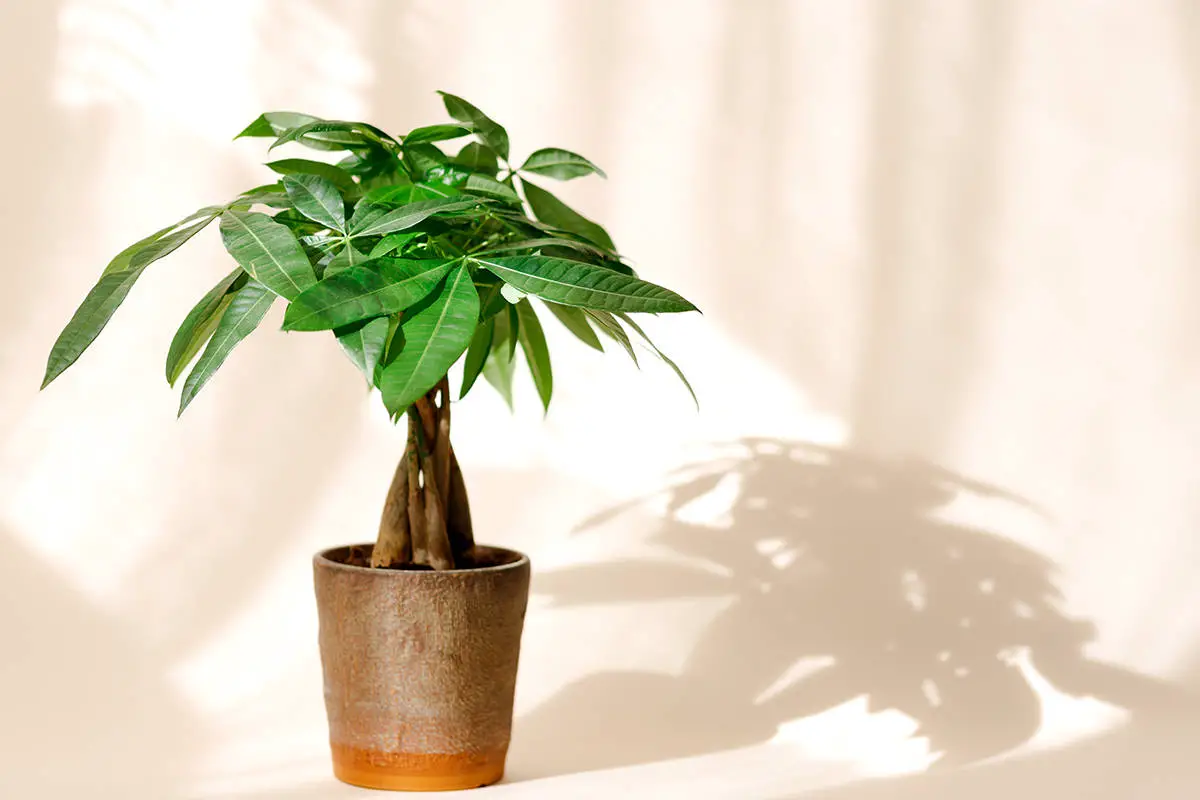
If you’re a cat owner, you might be happy to learn that the Money Tree plant is safe for your feline friends. These tropical plants have bright green leaves and can add a touch of the exotic to your home. They’re known for their braided stems and can grow quite large, bringing a vibrant green presence into your space.
For light requirements, the plant prefers bright, indirect light. In terms of watering, it’s important to keep the soil moist, but not soggy, particularly during the spring and summer months. Moreover, the plant thrives in environments with some humidity.
It has the potential to grow up to 30 inches tall and may produce yellow or orange flowers when in season.
Mosaic Plant
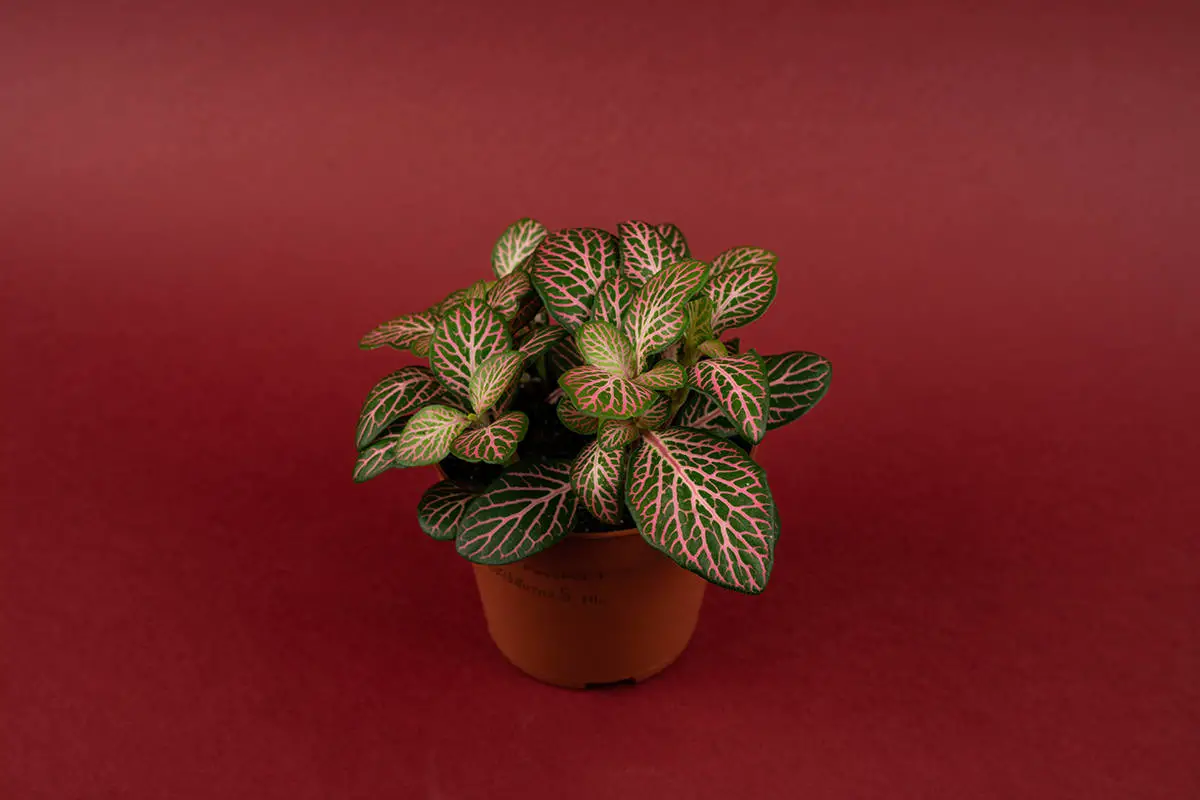
The Mosaic Plant, Fittonia albivenis, is an attractive option for cat owners. This plant is non-toxic and offers no threat if ingested. It’s known for its decorative, nerve-like leaf patterns.
Fittonia thrives in low-light conditions and prefers moist soil. You should maintain moderate temperatures and avoid over-watering. Fittonia needs good drainage to prevent root rot. Use pots with drainage holes to keep your plant healthy.
Pruning is easy with Fittonia. Trimming encourages a bushier growth. This will keep your plant full and lush. Keep the plant in a pot size proportional to its growth for best results.
Polka Dot Plant
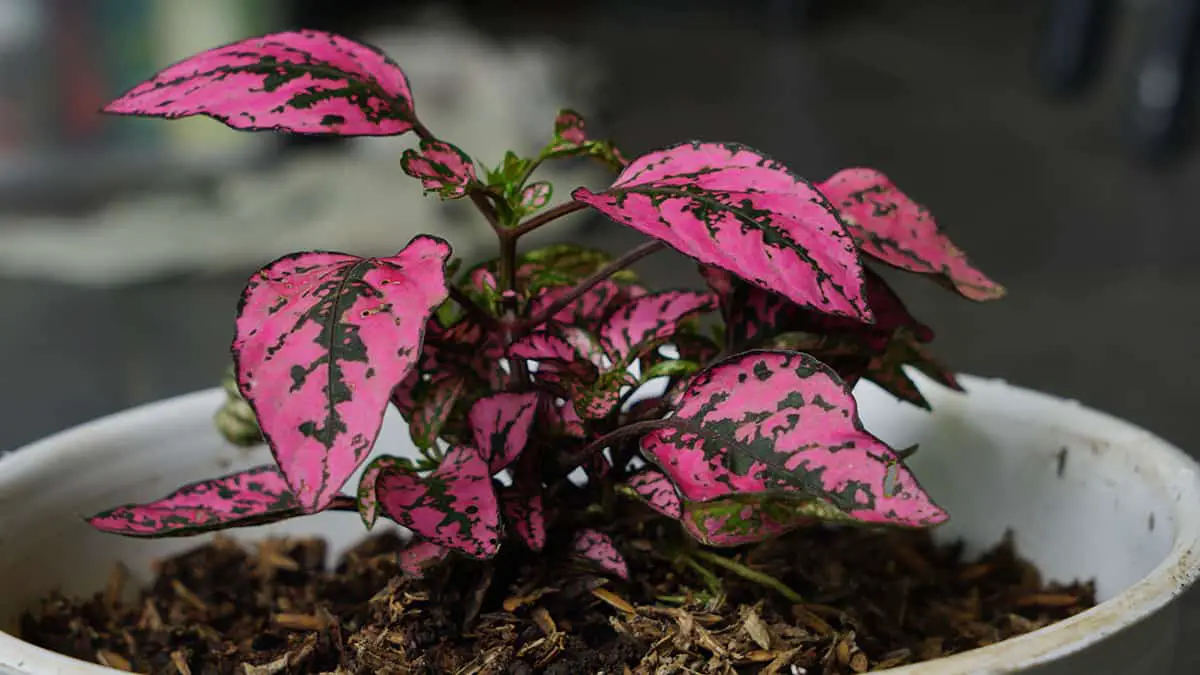
The Polka Dot Plant (Hypoestes phyllostachya) is known for its spotty foliage, which usually features shades of pink or red against a green background. Your cat can roam freely around this plant, as it is safe for them.
Care for your Polka Dot Plant by providing it with bright, indirect light. Direct sunlight may fade its vibrant colors. The ideal soil should be well-draining, and regular watering is necessary to keep the soil consistently moist. Overwatering, however, can lead to root rot.
When it comes to the environment, this plant prefers higher humidity. You might want to place it in a kitchen or bathroom. These areas are often more humid. Rotate the pot regularly to encourage even growth.
It’s essential to keep the plant compact and bushy. Achieve this by pinching off the top leaves. This encourages branching out. The Polka Dot Plant can reach up to 3 feet in height if provided with the right conditions.
Bird’s Nest Fern
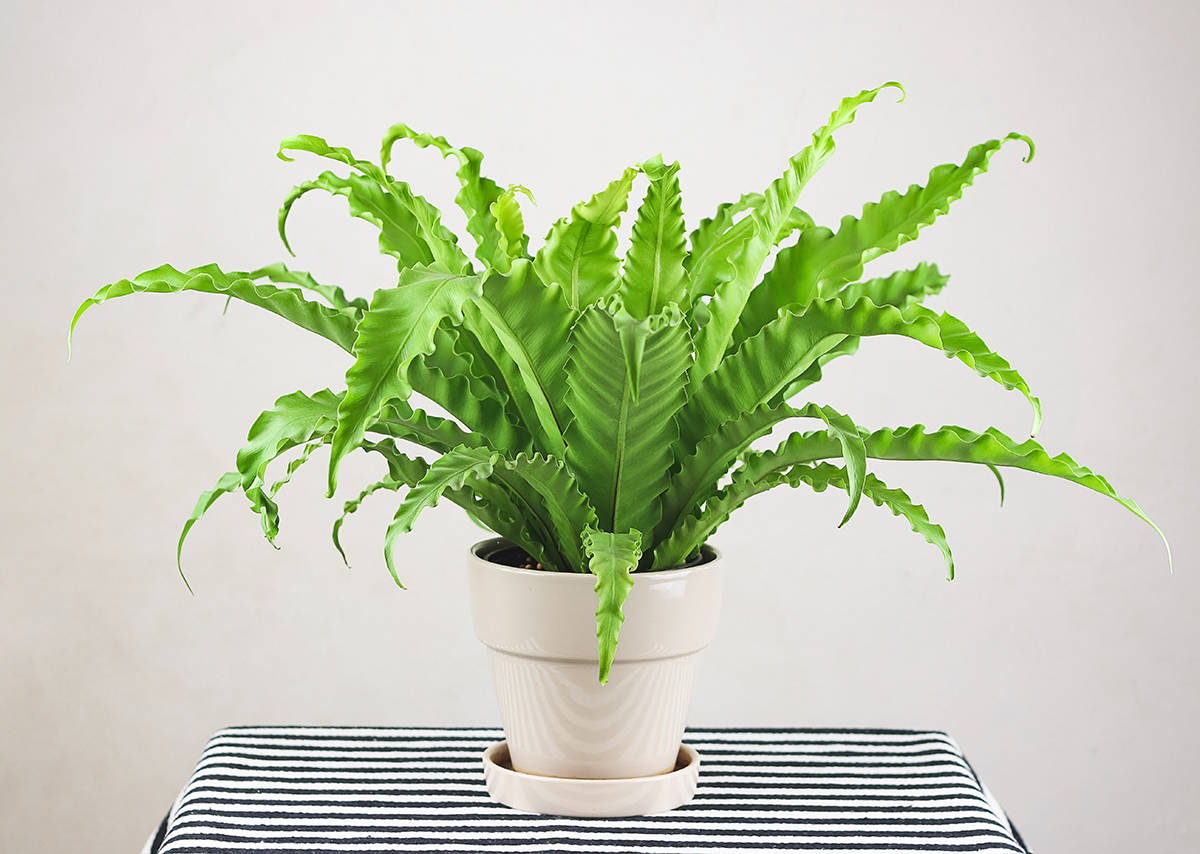
Your feline friends can safely enjoy the company of the Bird’s Nest Fern. This plant is an excellent choice if you seek a pet-friendly indoor green. It’s known for its distinct, ripple-edged fronds that emerge from a central rosette.
Caring for your Bird’s Nest Fern is straightforward. Ensure it has bright, indirect light and maintain consistent watering. Keep the soil moist, but avoid waterlogging to prevent root rot.
Consider placing this fern in areas of your home with higher humidity, such as bathrooms or kitchens. These settings are ideal because they closely resemble the plant’s natural, moist environment. It’s important to avoid direct sunlight, as it can scorch the leaves and cause them to dry out.
Apart from being non-toxic to cats, this fern offers the additional benefit of enhancing indoor air quality. It introduces a lively burst of green to your decor.
Prayer Plant
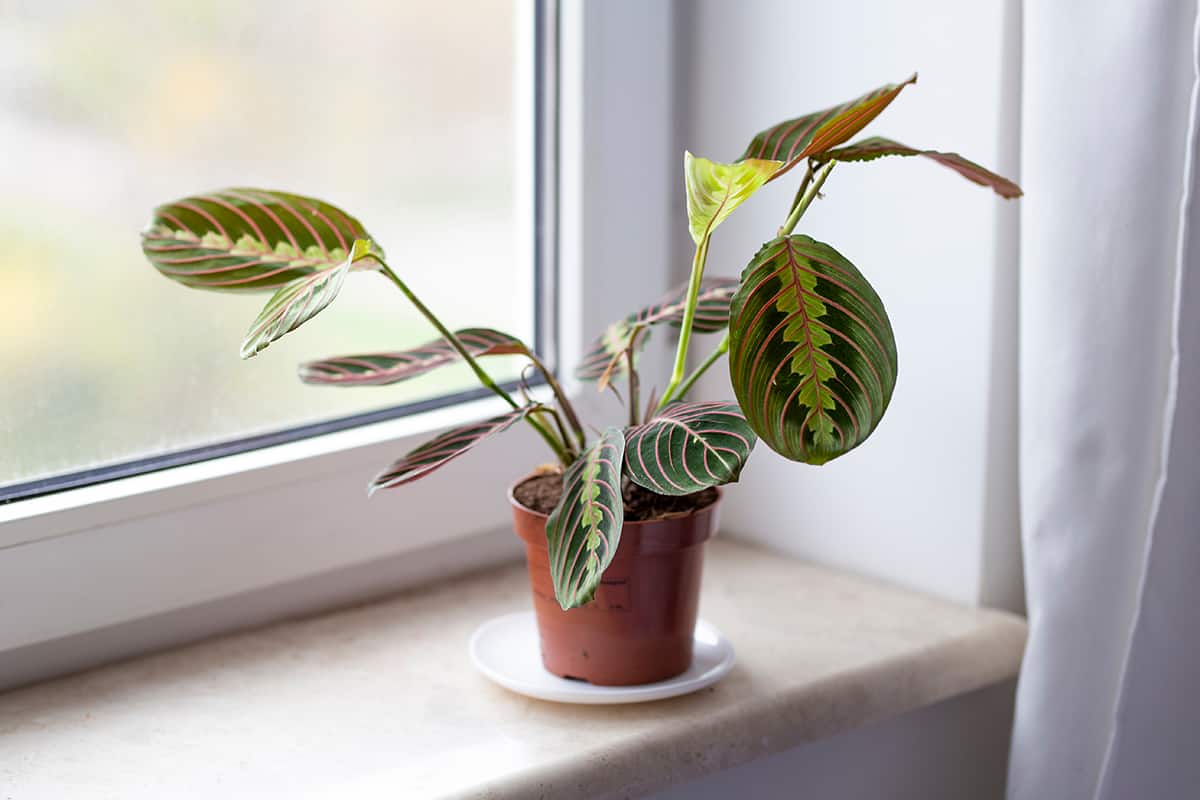
Prayer plants are known for their distinctive leaves that fold up at night, resembling hands in prayer. You will find them safe for cats as these plants are non-toxic. Your pets can roam freely without the risk of poisoning from nibbling on the leaves.
Caring for prayer plants is straightforward. They thrive in low-light conditions, making them perfect for indoor environments. Ensure they are in humid surroundings, such as a bathroom, to keep them healthy. Regular watering maintains their vibrant appearance, but be careful not to overwater.
Remember, prayer plants are also aesthetically pleasing. With striking leaf patterns, they can brighten up any room.
Baby Tears
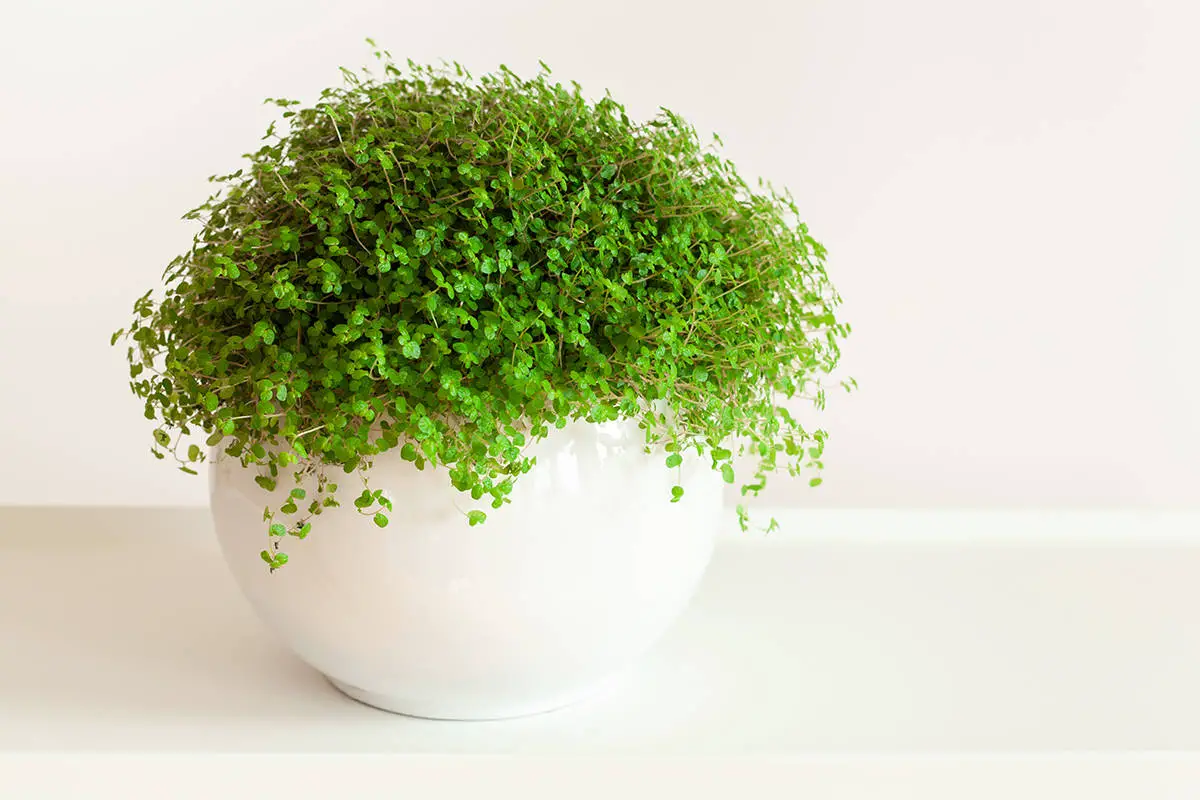
Baby Tears, scientifically known as Soleirolia soleirolii, are ideal houseplants for cat owners. Their non-toxic nature ensures your feline friends stay safe, even if they take a nibble. These plants feature small, round leaves that form a dense, lush green mat, resembling a miniature landscape.
These plants thrive in indirect light and prefer moist conditions. Keep your Baby Tears in well-draining soil. Regular watering maintains the moisture but avoids waterlogging. They’re perfect for terrariums or as underplanting for larger indoor plants, as they provide ground cover.
Care for your Baby Tears is straightforward. Trim them back as needed to control growth. This plant spreads easily if given room. An added bonus, Baby Tears can help create a humid environment beneficial for both plants and people.
Rattlesnake Plant
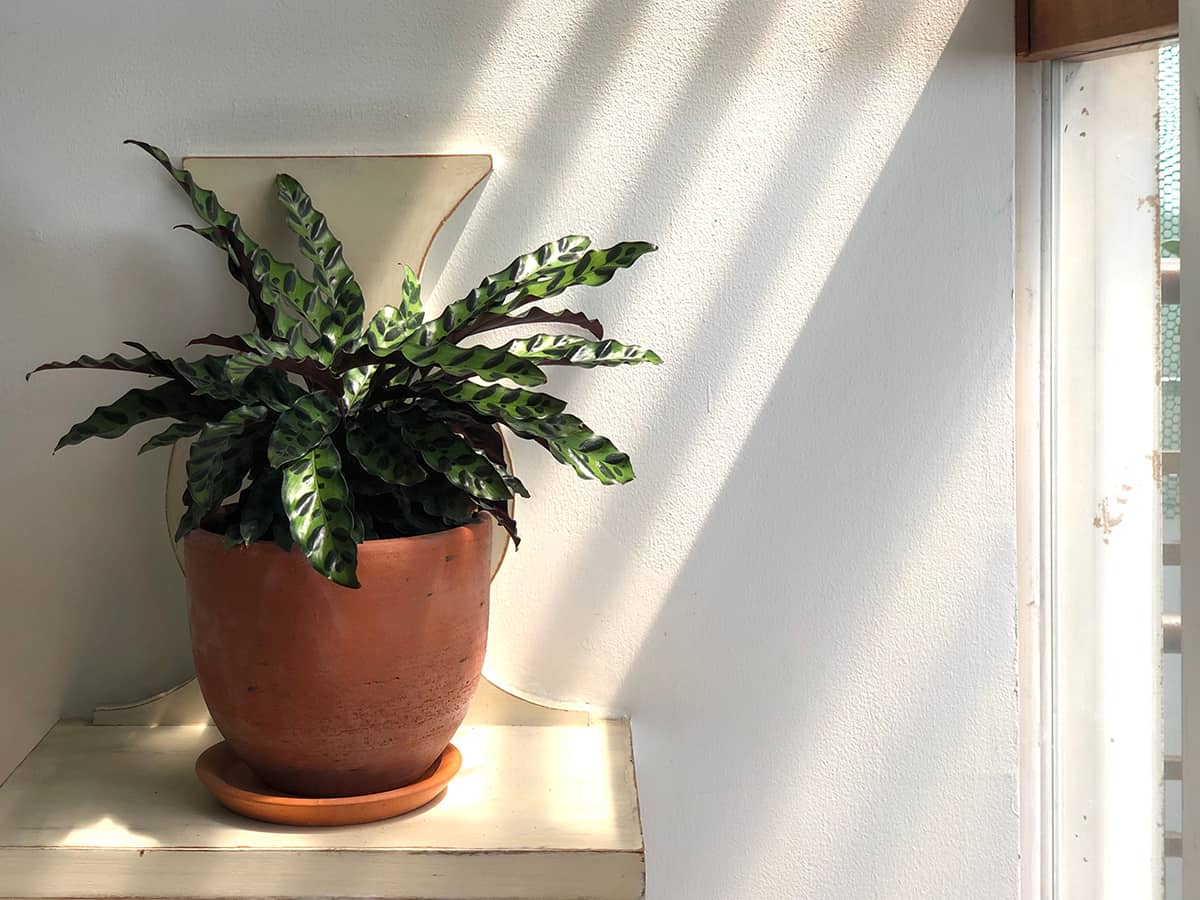
Recognized for its wavy green leaves with beautiful patterns, Rattlesnake Plant (Calathea lancifolia) is non-toxic to cats.
The Rattlesnake Plant is known for its fascinating leaf movements, reacting to the day-night cycle. This phenomenon is nifty to observe and is perfectly harmless to your feline companions. If chewed on, the worst your cat might face is mild gastrointestinal irritation.
Each leaf is marked distinctly with alternating dark green ovals and a rich purple underside, making it a striking choice for indoor gardeners. It’s a tropical plant, so it thrives in humid conditions and indirect light. Keep the soil consistently moist for the best growth.
To care for this plant, remember to keep it away from direct sunlight. Water it when the top inch of the soil feels dry. This keeps the plant healthy and prevents leaf tips from browning. It’s a hardy plant, which means it’s forgiving if you forget to water it from time to time.
